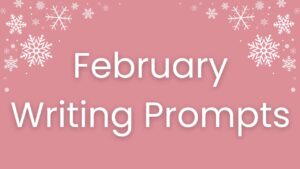Character Profile Training
In under 15 minutes you’ll learn how to effectively use a character profile to uplift any story your working on.
You’ll learn what’s important to make note of in a character profile, how to write it, and what to do with it when it’s complete.
By the end of this 15 minutes you’ll understand how helpful a character profile can really be.
We’ll talk about how you can plot a story or build a character arc from your profile.
Download your character
profile template
More after your training...
Two Ways to Outline Short Stories (Without Story Structures)
How do you outline a short story? You might assume that you’d want to use a story structure, but sometimes they can feel quite overwhelming for short stories. So, today we’ll talk about two other ways I’ve outlined short stories: character arcs and first drafts. Outlining With Character Arcs As a refresher, a character arc is the emotional journey a character takes throughout the story. They start in one place, and we see them grow and mature, and they settle into this new version of themselves. We all go through character arcs repeatedly throughout our lives. You’re probably not the same person you were six months ago, a year ago, five years ago. So it’s important that your characters have similar growth cycles, or one important arc, depending on the scope of your story. We want our characters to mimic real life as much as possible. Using the character arc to outline a story is a great way to create a character-driven story, which is when the story focuses more on a character’s inner-doings than the plot. We’re not necessarily going on a big quest like a hero’s journey, but we are following a character closely who’s usually grappling with something emotional, hence the character arc. How to create a character arc Character arcs can feel really overwhelming especially to new writers, so I like to break them down into three parts to start with. You can do this with a brand new character and make up the answers as you go, or you can take a previous character and use this to refine their character arc. The Now The first part is The Now. Where is your character currently? And by currently, I mean the beginning of your story. I have a few questions for you to discover who they are, and we’ll build off of these answers in the other two parts of this framework. The End Next, I want you to think of The End. This is where they are when your story ends. So let’s take a look at these same questions through the view of this new version of your character. Make up these answers as you go and we’ll fill in the gaps next. It’s okay to just guess as to where your character is ending up if you are starting from scratch. If you have a character already in the works, try to consider what in the first draft of your story has changed for them. The Bridge Next we’ll connect these two sections by figuring out how your character goes from The Now to The End. This is where the outlining can really begin. Let’s start by talking about how we grow as people. Usually, we learn things the hard way. Some big obstacle has to come up for us to overcome and in the process we become a little bit better of a person that way. We make mistakes and realize our wrong doing, and we have to apologize or work really hard not to make the same mistakes again. So, to start outlining, we need to think about what is going to happen to get your character from The Now to The End. What roadblocks can you throw in the way of your character so they trip and fall and have to pull themself back up? If your character becomes a more trusting person, maybe they have to form new relationships or rebuild old ones. If your character becomes more empathetic, maybe they have to have some fights with their significant other about not being there enough for them. Take some time to consider what lessons they need to learn, and how they can learn them. After you get these points figured out, I suggest moving into your first draft as you usually do, using these ideas as checkpoints along the way. Outlining After a First Draft Sometimes the best way to figure out what’s happening in your story is to word-vomit onto the page and see what comes out. For me, it often takes one or two drafts to recognize the plot or character arc starting to form. I can get something down on the paper and then rearrange and refresh where I need to. I like to get a general idea of a story down and then outline before a revision. This gives me the space to get to know my characters and their story without the pressure of sticking to an outline right away. Nothing has to happen in this first draft. I can go in with my tool belt of craft elements and tune it up into something that will grip the readers’ attention. Basically, this form of outlining is just revision, but a bit structured. Sometimes I like to do my word vomiting and then pick out the pieces that are working and lay them into an outline, then I’ll connect dots and fill in gaps in the outline as needed. You can rearrange your plot points as you do this, you can split them up, and you can get rid of them completely if you want to. This gives you a constructive way to go into your second draft rather than just fine tuning and guessing at what needs to be filled in.

Writing Character Appearance
Writing character appearance can be really tricky. How much do you show us? What’s important to discuss, and what can we leave out? What does your reader really care about? We’re going to answer these questions using my five point framework so you can really dive into my thought process behind writing character appearance.

How to Write Better Stories: 8 Tips You Can Apply to Your Work Today
Let’s talk about the eight tips any writer can implement into their work today to write better stories. With these small changes, you’ll start to build up your writerly toolbelt and gain that story-writing confidence. I’ve gathered these tips from trial and error and reading lots of books and articles about writing.

The 5 Best Books on Writing, Change My Mind
Everyone has such strong opinions on what books are the best books on writing, and I’m here to share my even stronger opinions. These are the next five books that need to be added to the top of your reading list, change my mind.

February Writing Prompts 2024
Happy February, writers! It’s time for some new writing prompts.
I’ve got new prompts, one for every day of the month, so check out these 29 writing prompts. You all know how much I love to focus on character development, so for these February writing prompts, I want you to write about your character in these specific situations.

How to Start a Writing Routine: Using the Habit Loop to Our Advantage
You’re here because you want to learn how to consistently write throughout the week with a writing routine. You might be looking for some magical answer that will whip you into self-discipline shape and get you to crank out 10,000 words a day, right?
Well, I am also looking for that magical answer, but until I find it, I can share with you the best tips I have on creating a writing routine that actually works for you.
More after your training...
Two Ways to Outline Short Stories (Without Story Structures)
How do you outline a short story? You might assume that you’d want to use a story structure, but sometimes they can feel quite overwhelming for short stories. So, today we’ll talk about two other ways I’ve outlined short stories: character arcs and first drafts. Outlining With Character Arcs As a refresher, a character arc is the emotional journey a character takes throughout the story. They start in one place, and we see them grow and mature, and they settle into this new version of themselves. We all go through character arcs repeatedly throughout our lives. You’re probably not the same person you were six months ago, a year ago, five years ago. So it’s important that your characters have similar growth cycles, or one important arc, depending on the scope of your story. We want our characters to mimic real life as much as possible. Using the character arc to outline a story is a great way to create a character-driven story, which is when the story focuses more on a character’s inner-doings than the plot. We’re not necessarily going on a big quest like a hero’s journey, but we are following a character closely who’s usually grappling with something emotional, hence the character arc. How to create a character arc Character arcs can feel really overwhelming especially to new writers, so I like to break them down into three parts to start with. You can do this with a brand new character and make up the answers as you go, or you can take a previous character and use this to refine their character arc. The Now The first part is The Now. Where is your character currently? And by currently, I mean the beginning of your story. I have a few questions for you to discover who they are, and we’ll build off of these answers in the other two parts of this framework. The End Next, I want you to think of The End. This is where they are when your story ends. So let’s take a look at these same questions through the view of this new version of your character. Make up these answers as you go and we’ll fill in the gaps next. It’s okay to just guess as to where your character is ending up if you are starting from scratch. If you have a character already in the works, try to consider what in the first draft of your story has changed for them. The Bridge Next we’ll connect these two sections by figuring out how your character goes from The Now to The End. This is where the outlining can really begin. Let’s start by talking about how we grow as people. Usually, we learn things the hard way. Some big obstacle has to come up for us to overcome and in the process we become a little bit better of a person that way. We make mistakes and realize our wrong doing, and we have to apologize or work really hard not to make the same mistakes again. So, to start outlining, we need to think about what is going to happen to get your character from The Now to The End. What roadblocks can you throw in the way of your character so they trip and fall and have to pull themself back up? If your character becomes a more trusting person, maybe they have to form new relationships or rebuild old ones. If your character becomes more empathetic, maybe they have to have some fights with their significant other about not being there enough for them. Take some time to consider what lessons they need to learn, and how they can learn them. After you get these points figured out, I suggest moving into your first draft as you usually do, using these ideas as checkpoints along the way. Outlining After a First Draft Sometimes the best way to figure out what’s happening in your story is to word-vomit onto the page and see what comes out. For me, it often takes one or two drafts to recognize the plot or character arc starting to form. I can get something down on the paper and then rearrange and refresh where I need to. I like to get a general idea of a story down and then outline before a revision. This gives me the space to get to know my characters and their story without the pressure of sticking to an outline right away. Nothing has to happen in this first draft. I can go in with my tool belt of craft elements and tune it up into something that will grip the readers’ attention. Basically, this form of outlining is just revision, but a bit structured. Sometimes I like to do my word vomiting and then pick out the pieces that are working and lay them into an outline, then I’ll connect dots and fill in gaps in the outline as needed. You can rearrange your plot points as you do this, you can split them up, and you can get rid of them completely if you want to. This gives you a constructive way to go into your second draft rather than just fine tuning and guessing at what needs to be filled in.

Writing Character Appearance
Writing character appearance can be really tricky. How much do you show us? What’s important to discuss, and what can we leave out? What does your reader really care about? We’re going to answer these questions using my five point framework so you can really dive into my thought process behind writing character appearance.

How to Write Better Stories: 8 Tips You Can Apply to Your Work Today
Let’s talk about the eight tips any writer can implement into their work today to write better stories. With these small changes, you’ll start to build up your writerly toolbelt and gain that story-writing confidence. I’ve gathered these tips from trial and error and reading lots of books and articles about writing.

The 5 Best Books on Writing, Change My Mind
Everyone has such strong opinions on what books are the best books on writing, and I’m here to share my even stronger opinions. These are the next five books that need to be added to the top of your reading list, change my mind.
More after your training...
Two Ways to Outline Short Stories (Without Story Structures)
How do you outline a short story? You might assume that you’d want to use a story structure, but sometimes they can feel quite overwhelming for short stories. So, today we’ll talk about two other ways I’ve outlined short stories: character arcs and first drafts. Outlining With Character Arcs As a refresher, a character arc is the emotional journey a character takes throughout the story. They start in one place, and we see them grow and mature, and they settle into this new version of themselves. We all go through character arcs repeatedly throughout our lives. You’re probably not the same person you were six months ago, a year ago, five years ago. So it’s important that your characters have similar growth cycles, or one important arc, depending on the scope of your story. We want our characters to mimic real life as much as possible. Using the character arc to outline a story is a great way to create a character-driven story, which is when the story focuses more on a character’s inner-doings than the plot. We’re not necessarily going on a big quest like a hero’s journey, but we are following a character closely who’s usually grappling with something emotional, hence the character arc. How to create a character arc Character arcs can feel really overwhelming especially to new writers, so I like to break them down into three parts to start with. You can do this with a brand new character and make up the answers as you go, or you can take a previous character and use this to refine their character arc. The Now The first part is The Now. Where is your character currently? And by currently, I mean the beginning of your story. I have a few questions for you to discover who they are, and we’ll build off of these answers in the other two parts of this framework. The End Next, I want you to think of The End. This is where they are when your story ends. So let’s take a look at these same questions through the view of this new version of your character. Make up these answers as you go and we’ll fill in the gaps next. It’s okay to just guess as to where your character is ending up if you are starting from scratch. If you have a character already in the works, try to consider what in the first draft of your story has changed for them. The Bridge Next we’ll connect these two sections by figuring out how your character goes from The Now to The End. This is where the outlining can really begin. Let’s start by talking about how we grow as people. Usually, we learn things the hard way. Some big obstacle has to come up for us to overcome and in the process we become a little bit better of a person that way. We make mistakes and realize our wrong doing, and we have to apologize or work really hard not to make the same mistakes again. So, to start outlining, we need to think about what is going to happen to get your character from The Now to The End. What roadblocks can you throw in the way of your character so they trip and fall and have to pull themself back up? If your character becomes a more trusting person, maybe they have to form new relationships or rebuild old ones. If your character becomes more empathetic, maybe they have to have some fights with their significant other about not being there enough for them. Take some time to consider what lessons they need to learn, and how they can learn them. After you get these points figured out, I suggest moving into your first draft as you usually do, using these ideas as checkpoints along the way. Outlining After a First Draft Sometimes the best way to figure out what’s happening in your story is to word-vomit onto the page and see what comes out. For me, it often takes one or two drafts to recognize the plot or character arc starting to form. I can get something down on the paper and then rearrange and refresh where I need to. I like to get a general idea of a story down and then outline before a revision. This gives me the space to get to know my characters and their story without the pressure of sticking to an outline right away. Nothing has to happen in this first draft. I can go in with my tool belt of craft elements and tune it up into something that will grip the readers’ attention. Basically, this form of outlining is just revision, but a bit structured. Sometimes I like to do my word vomiting and then pick out the pieces that are working and lay them into an outline, then I’ll connect dots and fill in gaps in the outline as needed. You can rearrange your plot points as you do this, you can split them up, and you can get rid of them completely if you want to. This gives you a constructive way to go into your second draft rather than just fine tuning and guessing at what needs to be filled in.

Writing Character Appearance
Writing character appearance can be really tricky. How much do you show us? What’s important to discuss, and what can we leave out? What does your reader really care about? We’re going to answer these questions using my five point framework so you can really dive into my thought process behind writing character appearance.
